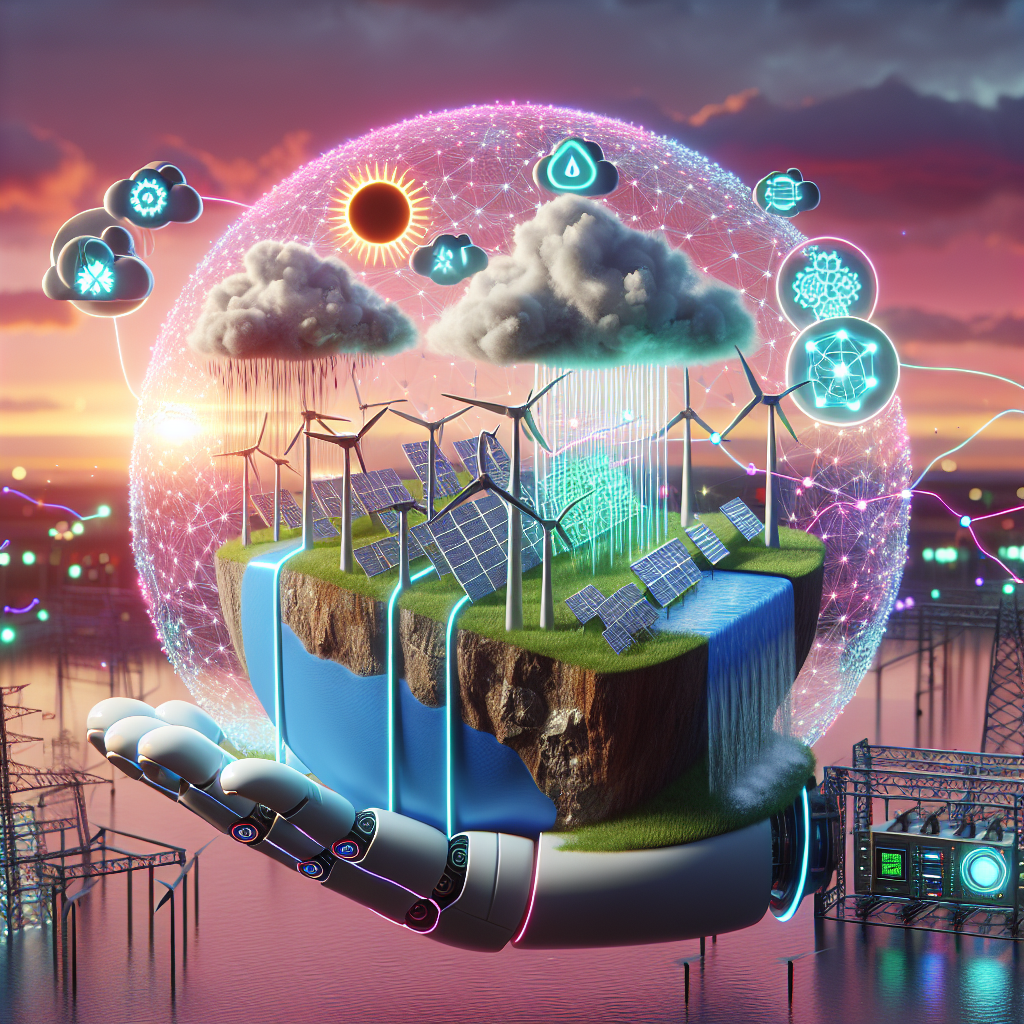As the world continues to shift towards renewable energy sources such as solar and wind power, one of the biggest challenges facing the industry is the variability of these resources. Unlike traditional fossil fuels, renewable energy sources are dependent on weather conditions and can fluctuate in their output, making it difficult to predict and manage energy generation.
However, with the advancements in artificial intelligence (AI) technology, there are now powerful solutions available to help predict and mitigate the variability of renewable energy sources. These AI solutions can provide more accurate forecasts, optimize energy production, and ultimately increase the efficiency and reliability of renewable energy systems.
Predicting Renewable Energy Variability with AI
One of the key ways AI can help with renewable energy variability is through improved forecasting models. By analyzing historical data, weather patterns, and other relevant factors, AI algorithms can generate more accurate predictions of renewable energy generation. This can help energy operators better anticipate fluctuations in energy production and plan accordingly to ensure a stable supply of electricity.
AI can also be used to optimize the operation of renewable energy systems in real-time. By continuously monitoring and analyzing data from sensors and other sources, AI algorithms can adjust the output of renewable energy sources to match the current demand. This can help minimize waste and maximize the efficiency of renewable energy systems.
Mitigating Renewable Energy Variability with AI
In addition to predicting renewable energy variability, AI can also help mitigate its impact on the grid. One way AI can do this is by integrating energy storage solutions with renewable energy systems. By using AI algorithms to manage the storage and release of energy, operators can smooth out fluctuations in energy generation and ensure a consistent supply of electricity.
AI can also be used to optimize the placement and design of renewable energy systems. By analyzing data on factors such as weather patterns, topography, and energy demand, AI algorithms can help determine the most effective locations for renewable energy installations. This can help maximize energy production and minimize the impact of variability on the grid.
FAQs about AI Solutions for Predicting and Mitigating Renewable Energy Variability
Q: How accurate are AI forecasting models for renewable energy variability?
A: AI forecasting models for renewable energy variability can be highly accurate, especially when they are trained on large amounts of historical data and continuously updated with real-time information. By using advanced machine learning algorithms, AI can provide more precise predictions of energy generation, helping energy operators better manage variability.
Q: How can AI help optimize the operation of renewable energy systems in real-time?
A: AI can optimize the operation of renewable energy systems in real-time by analyzing data from sensors and other sources to adjust the output of energy sources to match the current demand. By continuously monitoring and adjusting energy production, AI algorithms can help ensure a stable supply of electricity and maximize the efficiency of renewable energy systems.
Q: What are some examples of AI solutions for mitigating renewable energy variability?
A: Some examples of AI solutions for mitigating renewable energy variability include using energy storage systems to smooth out fluctuations in energy generation, optimizing the placement and design of renewable energy installations, and integrating AI algorithms into grid management systems to balance supply and demand.
Q: How can AI help increase the efficiency and reliability of renewable energy systems?
A: AI can help increase the efficiency and reliability of renewable energy systems by providing more accurate predictions of energy generation, optimizing the operation of energy systems in real-time, and mitigating the impact of variability on the grid. By using AI technology, energy operators can better manage renewable energy resources and ensure a stable supply of electricity.
In conclusion, AI solutions have the potential to revolutionize the renewable energy industry by providing more accurate predictions of energy generation, optimizing the operation of energy systems, and mitigating the impact of variability on the grid. By harnessing the power of AI technology, energy operators can increase the efficiency and reliability of renewable energy systems, ultimately helping to accelerate the transition to a more sustainable energy future.

